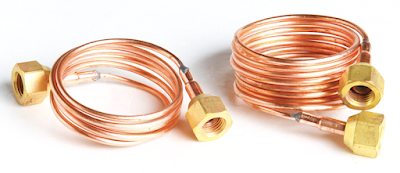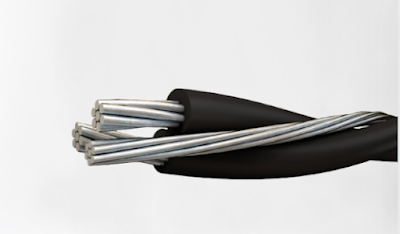What is the Use of Capillary Tube in AC?
 |
| Use of Capillary Tube in AC |
Introduction
In the realm of air conditioning systems, various components work together seamlessly to ensure optimal performance. One such critical component is the capillary tube. As we delve into the intricacies of air conditioning technology, it becomes evident that the use of capillary tubes plays a pivotal role in regulating the system's functionality.
The Basics: What is a Capillary Tube?
A capillary tube is a slender, copper tube often used in refrigeration and air conditioning systems. Its primary function is to control the flow of refrigerant, facilitating the transfer of heat and ensuring the efficient operation of the AC unit.
How Does a Capillary Tube Work?
1. Refrigerant Flow Regulation
The capillary tube serves as a metering device, controlling the flow of refrigerant into the evaporator coil. This regulation is crucial for maintaining the right balance in the system, ensuring optimal cooling efficiency.
2. Pressure Differential
As the refrigerant passes through the capillary tube, a pressure differential is created. This pressure drop allows the refrigerant to change from a high-pressure liquid to a low-pressure liquid-gas mixture, a process essential for effective heat exchange.
The Significance of Capillary Tubes in AC Systems
Understanding the use of capillary tubes in air conditioning requires a closer look at their specific functions and contributions to system performance.
1. Size Matters: Matching the Tube to the System
Capillary tubes come in various sizes, and selecting the right size is crucial. The diameter of the tube directly affects the flow rate of the refrigerant, impacting the overall efficiency of the air conditioning unit.
2. Temperature Regulation
The capillary tube plays a vital role in maintaining the desired temperature within the system. By controlling the flow of refrigerant, it ensures that the evaporator coil operates at the optimal temperature for efficient heat exchange.
3. Energy Efficiency
Efficiency is a key consideration in modern air conditioning systems. Capillary tubes contribute to energy efficiency by precisely metering the amount of refrigerant needed, preventing wastage and promoting a more eco-friendly operation.
Installation and Maintenance Considerations
1. Professional Installation
Proper installation of the capillary tube is paramount to the overall performance of the AC unit. Only qualified technicians should handle the installation process to ensure the correct sizing and positioning of the tube.
2. Regular Maintenance
Routine maintenance is essential to keep the capillary tube and the entire AC system in top condition. This includes checking for any blockages, leaks, or signs of wear and tear that may compromise the tube's effectiveness.
Common Issues and Troubleshooting
Despite their critical role, capillary tubes are not immune to issues. Understanding common problems can aid in troubleshooting and timely resolution.
1. Blockages
Over time, capillary tubes may experience blockages due to debris or contaminants in the refrigerant. Regular maintenance can help prevent and address this issue.
2. Leaks
Leaks in the capillary tube can result in a loss of refrigerant, leading to decreased system efficiency. Identifying and repairing leaks promptly is essential to avoid further damage.
Conclusion
In conclusion, the use of capillary tubes in air conditioning systems is fundamental to their functionality. From regulating refrigerant flow to ensuring temperature control and energy efficiency, these slender tubes play a crucial role in creating a comfortable indoor environment. Regular maintenance and professional installation are key to maximizing the lifespan and effectiveness of capillary tubes in AC units.
By understanding the significance of the capillary tube, users can make informed decisions regarding system maintenance and troubleshooting, ultimately contributing to a more sustainable and efficient use of air conditioning technology.
Read also: What is the Power Transmission Capacity of a 22kV Cable?
Read also: Facts About Medium Voltage Cables You Need to Know
Read also: Znergy Cable Australia - Australian Electrical Cable Manufacturers



Comments